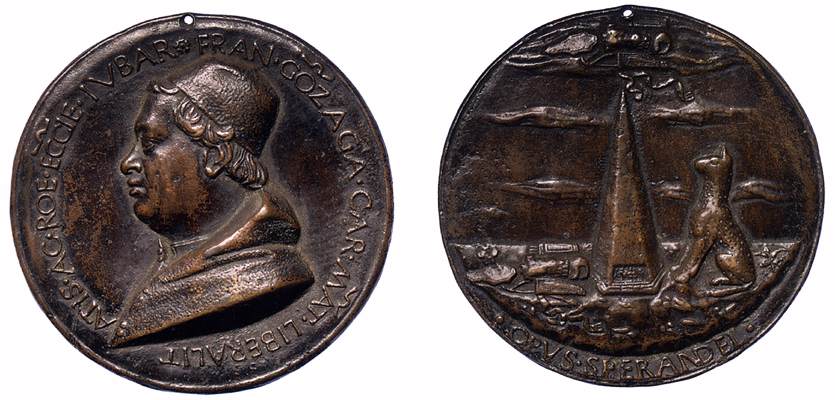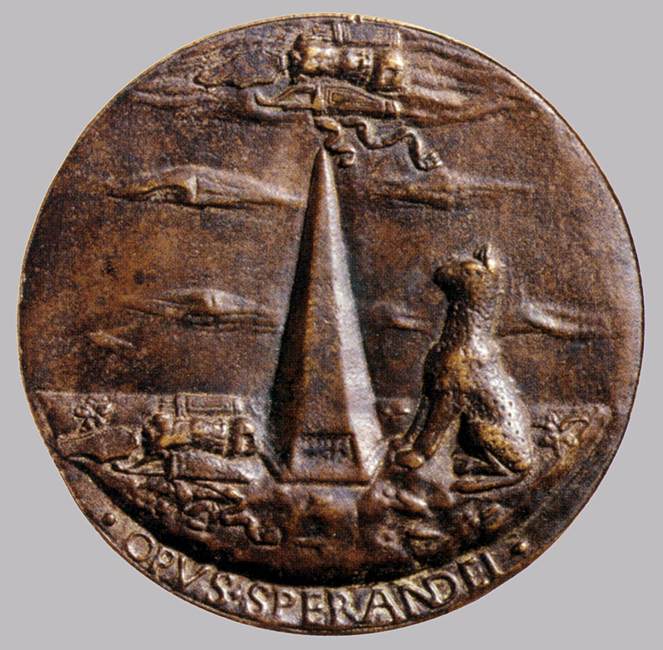Sperandio di Bartolommeo Savelli, Italian medallist, architect, sculptor, painter, bronze and cannon caster. He was the son of a Roman goldsmith, Bartolommeo di Sperandio Savelli. In c. 1437 the family left Mantua to settle in Ferrara, where Sperandio was probably trained in goldsmithing by his father. Sperandio is first mentioned as a goldsmith at Ferrara in 1445 and again in 1447. He appears to have returned to Mantua at some point and to have been employed by Borso d'Este, Marquess of Ferrara, by the early 1460s. His medals of Giovanni II Bentivoglio, Prince of Bologna, Bartolommeo Pendaglia, merchant at Ferrara, Giustiniano Cavitelli, jurisconsult at Cremona, and Antonio Sarzanella de' Manfredi of Faenza have been assigned to the early years of his first period in Ferrara (1462-77). The medal depicting Francesco Sforza, Duke of Milan (c. 1466), shows the sitter in three-quarter view (the only en face medallic work by Sperandio). It does not appear to have been executed from life, but from a painting or drawing.
After Borso d'Este's death and Ercole d'Este's accession to the duchy (1471), Sperandio appealed to him for assistance, and sent him, unsolicited, a medal with Ercole's portrait; the piece is probably the one mentioned in Ercole's inventory of 1471. Sperandio signs his letter 'Sperandio of Mantua, goldsmith living in Ferrara'. The appeal seems to have led to continuation of his employment, as records of 1475 show a payment to him for two marble busts executed for the duke (one in Paris, Louvre).
Sperandio was an artist of many talents - medalist, painter, goldsmith, architect, cannon founder, and sculptor - but he is known primarily for his medallic output. With forty-eight medals to his credit, he was among the most productive of fifteenth-century medalists, producing an impressive gallery of representations and evocative portraits that seem to have captured vividly the character and personality of Renaissance man.
//
![]()






